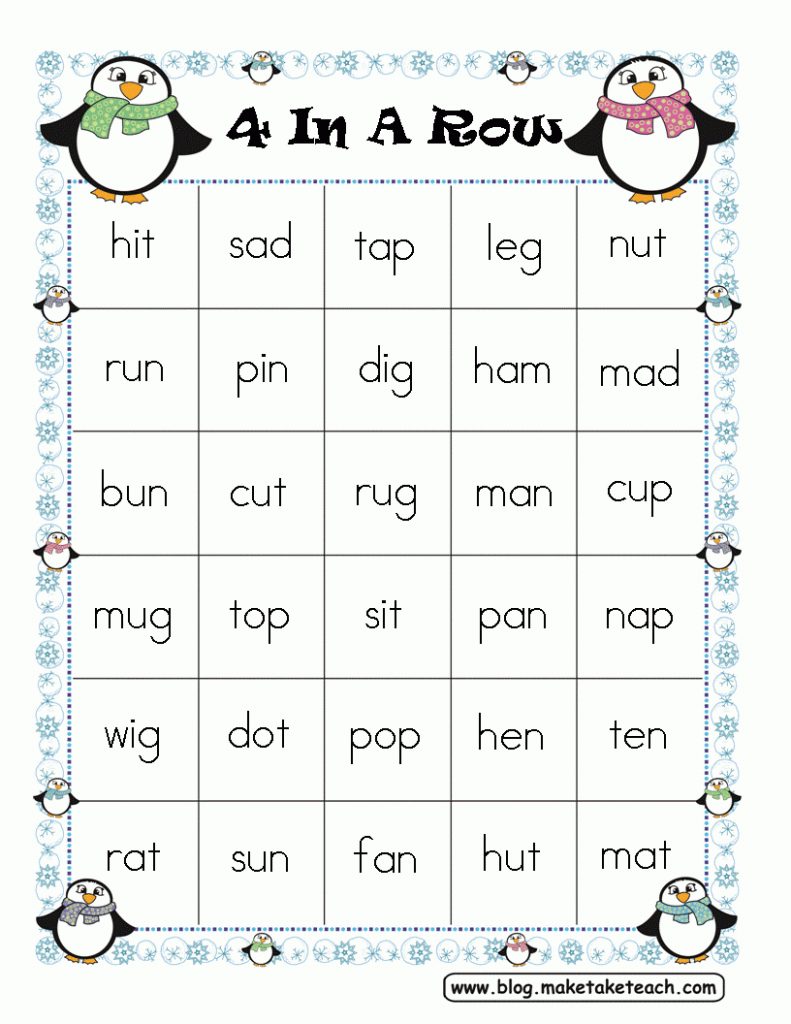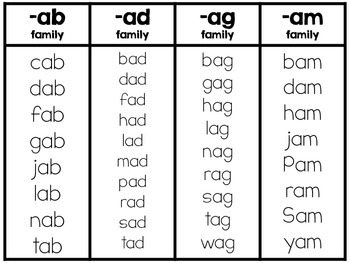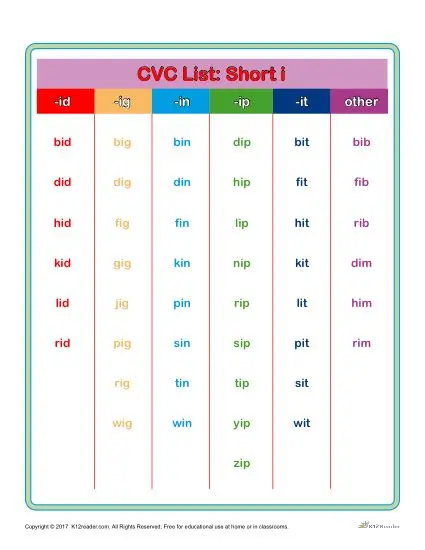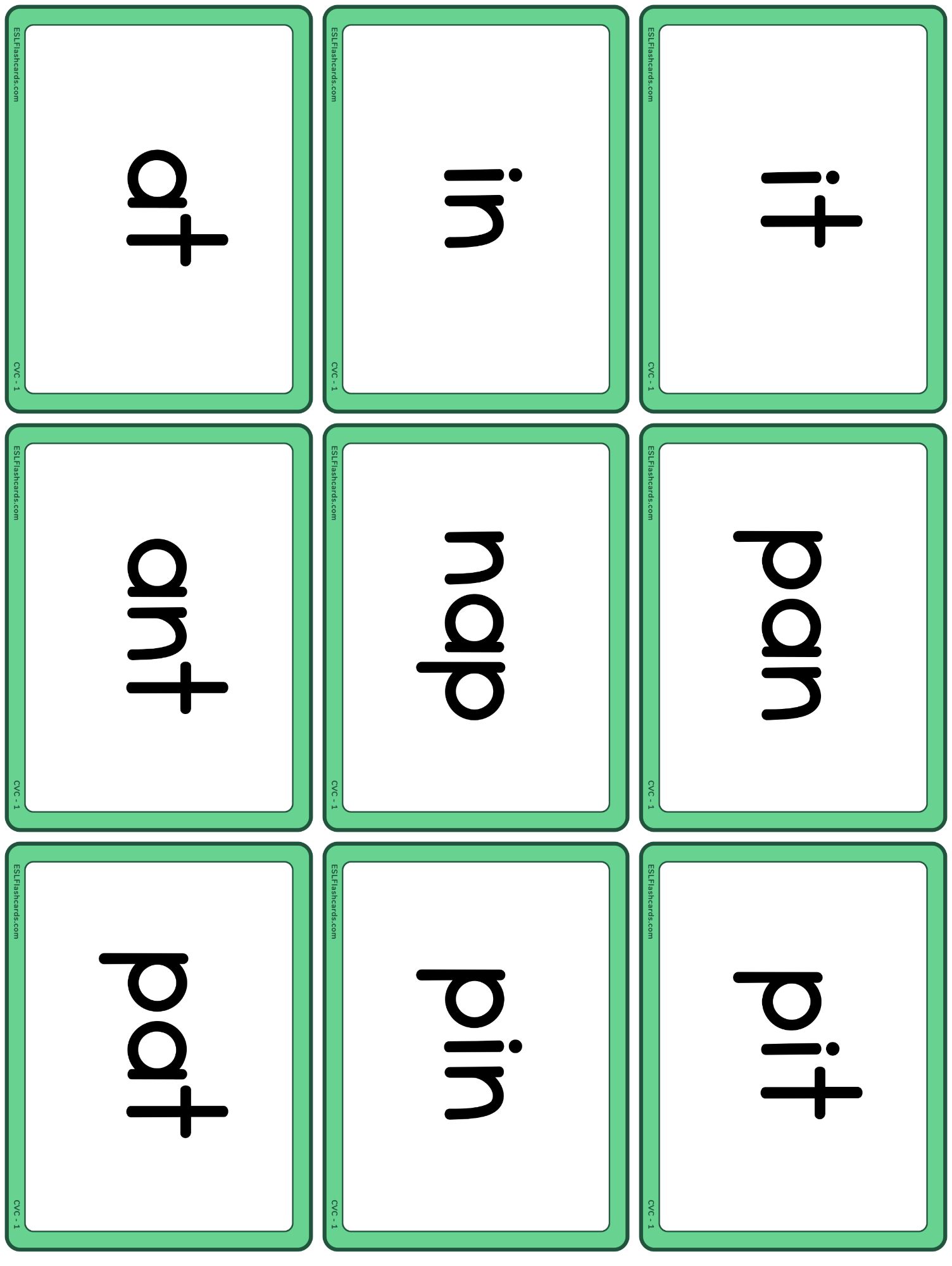Why Teaching CVC Words is Essential for Early Readers
Teaching early readers can be a challenging task, but one essential aspect of their learning journey is introducing CVC words. CVC, or consonant-vowel-consonant, words are short, simple words that follow a specific letter pattern. These words play a crucial role in building a strong foundation in reading and phonics skills for young children.
The Importance of CVC Words in Reading Development
CVC words are often the first words that children encounter when they start their reading journey. These words are easy to decode for young readers because they typically consist of consonant sounds, a short vowel sound, and another consonant sound. By practicing with CVC words, children learn to blend sounds together to form words, which is a fundamental skill in reading.
Research has shown that incorporating CVC words in early literacy instruction has numerous benefits. Let’s explore some of the reasons why teaching CVC words is essential for early readers:
1. Building Phonemic Awareness
 Teaching CVC words helps children develop phonemic awareness, which is the ability to identify and manipulate individual sounds in words. By practicing with CVC words, children learn how different sounds come together to form words.
Teaching CVC words helps children develop phonemic awareness, which is the ability to identify and manipulate individual sounds in words. By practicing with CVC words, children learn how different sounds come together to form words.
2. Enhancing Letter-Sound Correspondence
 Understanding the relationship between letters and sounds is crucial for reading success. CVC words provide children with ample opportunities to practice letter-sound correspondence as each letter represents a specific sound. This helps children develop fluency in decoding words.
Understanding the relationship between letters and sounds is crucial for reading success. CVC words provide children with ample opportunities to practice letter-sound correspondence as each letter represents a specific sound. This helps children develop fluency in decoding words.
3. Improving Reading Fluency
 CVC words are typically short and simple, making them perfect for early readers to practice reading with fluency. By reading CVC words, children can build their confidence and improve their reading speed and accuracy.
CVC words are typically short and simple, making them perfect for early readers to practice reading with fluency. By reading CVC words, children can build their confidence and improve their reading speed and accuracy.
4. Supporting Vocabulary Development
 Learning CVC words introduces children to a range of vocabulary. These words not only help children recognize and understand common letter patterns but also expand their vocabulary as they encounter new words. This paves the way for future language development.
Learning CVC words introduces children to a range of vocabulary. These words not only help children recognize and understand common letter patterns but also expand their vocabulary as they encounter new words. This paves the way for future language development.
5. Bridging Reading and Writing Skills
 As children practice reading CVC words, they also build a strong foundation for writing. By recognizing and decoding CVC words, children can transfer this knowledge to their writing, allowing them to spell words phonetically and develop their writing skills.
As children practice reading CVC words, they also build a strong foundation for writing. By recognizing and decoding CVC words, children can transfer this knowledge to their writing, allowing them to spell words phonetically and develop their writing skills.
How to Teach CVC Words Effectively
Now that we understand the importance of teaching CVC words, let’s explore some effective strategies to help children grasp and master these foundational words:
1. Start with Short Vowel Sounds
 When introducing CVC words, it’s best to start with short vowel sounds, such as /a/, /e/, /i/, /o/, and /u/. Begin with one vowel sound at a time and allow children to practice reading and spelling words that follow the specific vowel sound pattern.
When introducing CVC words, it’s best to start with short vowel sounds, such as /a/, /e/, /i/, /o/, and /u/. Begin with one vowel sound at a time and allow children to practice reading and spelling words that follow the specific vowel sound pattern.
2. Use Multisensory Activities
 Engage children in multisensory activities to reinforce their learning of CVC words. This can include using hands-on materials like letter tiles, magnetic letters, or even sensory activities where children trace letters in sand or play dough.
Engage children in multisensory activities to reinforce their learning of CVC words. This can include using hands-on materials like letter tiles, magnetic letters, or even sensory activities where children trace letters in sand or play dough.
3. Practice Word Families
 Categorizing CVC words into word families can make the learning process more manageable for children. Word families consist of words that share the same ending sound, like “cat,” “bat,” and “mat.” Practice reading and writing words from the same word family to reinforce their understanding of letter patterns.
Categorizing CVC words into word families can make the learning process more manageable for children. Word families consist of words that share the same ending sound, like “cat,” “bat,” and “mat.” Practice reading and writing words from the same word family to reinforce their understanding of letter patterns.
4. Build Sentences with CVC Words
 Once children become proficient in reading CVC words, gradually introduce sentence-building activities. This helps children understand how CVC words can be used to form meaningful sentences and strengthens their overall reading comprehension.
Once children become proficient in reading CVC words, gradually introduce sentence-building activities. This helps children understand how CVC words can be used to form meaningful sentences and strengthens their overall reading comprehension.
5. Engage in Reading and Writing Activities
 Provide ample opportunities for children to practice reading and writing CVC words in various contexts. This can include storybooks, worksheets, interactive games, or even creating their own mini-books with CVC words.
Provide ample opportunities for children to practice reading and writing CVC words in various contexts. This can include storybooks, worksheets, interactive games, or even creating their own mini-books with CVC words.
Conclusion
Teaching CVC words is crucial for the early reading and phonics development of young children. By incorporating CVC words into their learning journey, children can build phonemic awareness, enhance letter-sound correspondence, improve reading fluency, support vocabulary development, and bridge reading and writing skills. Remember to use effective teaching strategies and engage children in hands-on activities to make their learning experience enjoyable and effective. With consistent practice and support, children will confidently embark on their reading journey, laying the foundation for future academic success.